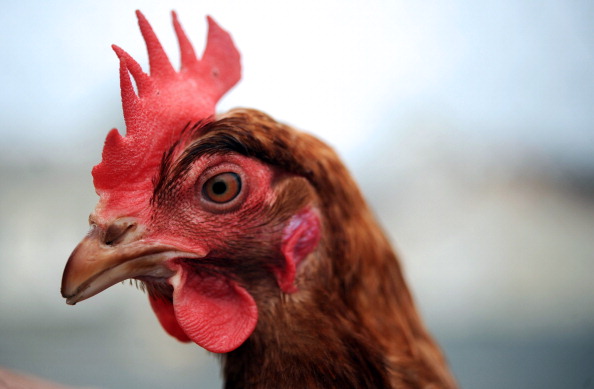
May was Earth’s hottest month on record — and as the planet gets warmer, chickens are struggling to adapt. Their body temperatures rise, which leads to higher mortality rates and an increased risk of disease that may threaten global poultry supply in the next decades.
Enter geneticist Carl Schmidt and his team from the University of Delaware, who believe that reducing a chicken’s feather count — making it look bald, basically — will cool it down and reduce health risks.
“We’re going to be seeing heat waves that are both hotter and longer,” Schmidt told Modern Farmer. “And we need to learn how to mitigate the effect of climate change on animals — we need to figure out how to help them adapt to it.”
For three years, Schmidt and his team traveled throughout Uganda and Brazil to study birds with featherless necks and heads in the hopes of crossbreeding them with the feathered North American breeds.
Researchers stress that this is selective breeding, not genetic modification.
Schmidt and his team will spend the next two years analyzing the DNA of the bare-necked birds – however it’ll be much longer until crossbreeding actually takes place.
“It could take two decades of research before resulting in any actual chickens,” he said. But at least a start is being made in preserving a food source that can only become more important as the effects of climate change make themselves more broadly felt.
More Must-Reads from TIME
- Why Trump’s Message Worked on Latino Men
- What Trump’s Win Could Mean for Housing
- The 100 Must-Read Books of 2024
- Sleep Doctors Share the 1 Tip That’s Changed Their Lives
- Column: Let’s Bring Back Romance
- What It’s Like to Have Long COVID As a Kid
- FX’s Say Nothing Is the Must-Watch Political Thriller of 2024
- Merle Bombardieri Is Helping People Make the Baby Decision
Contact us at letters@time.com